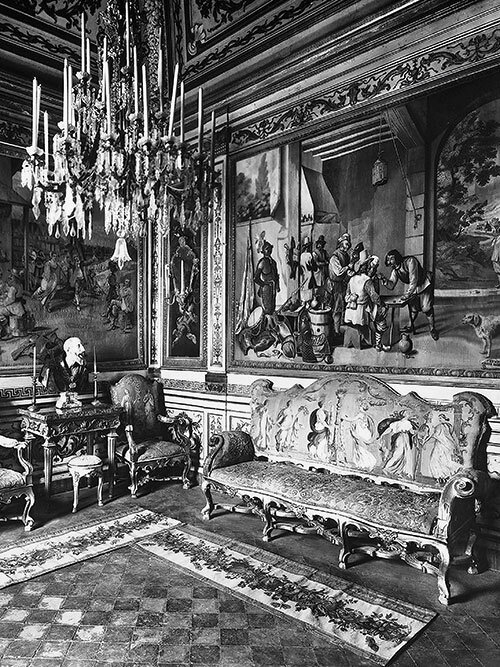Vol. 1
Hidden in Plain Sight
Villa Albani Torlonia
text by Marco Voena
Just east of the grounds of Villa Borghese in Rome lies an 18th-century villa that once housed one of the most important collections of ancient sculpture in the world. It is a citadel of artifacts that have been kept hidden for several generations. However, through 19th-century Fratelli Alinari photographs we have vicarious access to view interiors, gardens, and works of art long concealed from public view.
The Villa Albani was built on the Via Salaria for the great connoisseur Cardinal Alessandro Albani, nephew of Pope Clement XI, between 1747 and 1767 and was designed by the architect Carlo Marchionni to house Albani’s collections of antiquities and ancient Roman sculpture.
The Albani antiquities were catalogued by the art historian and archeologist Johann Joachim Winckelmann who was sponsored by Albani as his librarian and lived at the villa. Marchionni collaborated with Albani and Winckelmann to create innovative display spaces for Albani’s collection, which in some places were incorporated into the building itself: beneath the casino, the portico, the coffee house, and a semi-circular Roman portico, they constructed an Egyptian Hall. It is here Winkelmann championed Neoclassicism and where his friend Anton Raphael Mengs painted the first Neoclassical painting.
The bulk of Albani’s collection, however, was seized by Napoleon and was sold after his downfall (it now forms the nucleus of the collection of the Glyptotek in Munich). Following the Napoleonic rule in Italy, Villa Albani was first sold to the Chigi family and later to the Torlonia family. The extraordinary collection of coins and medals, which belonged to Cardinal Albani, was given to the Vatican Library, where he was the Cardinal Librarian from 1761 until his death.
Although many of the sarcophagi, columns, and sculptures were dispersed, many of the works of art, ceramics, old master paintings, and antiquities that were integral to the original design, including the famous bas-relief of Antinous, remain in the villa.
Villa Albani is still privately owned by the Torlonia family, who amassed an extraordinary collection of works by acquiring art from many of the greatest connoisseurs of the 17th and 18th centuries. And just as the villa’s doors have remained closed to the public this past century, much of the Torlonia collection has been closeted away in storage since the 19th century…





